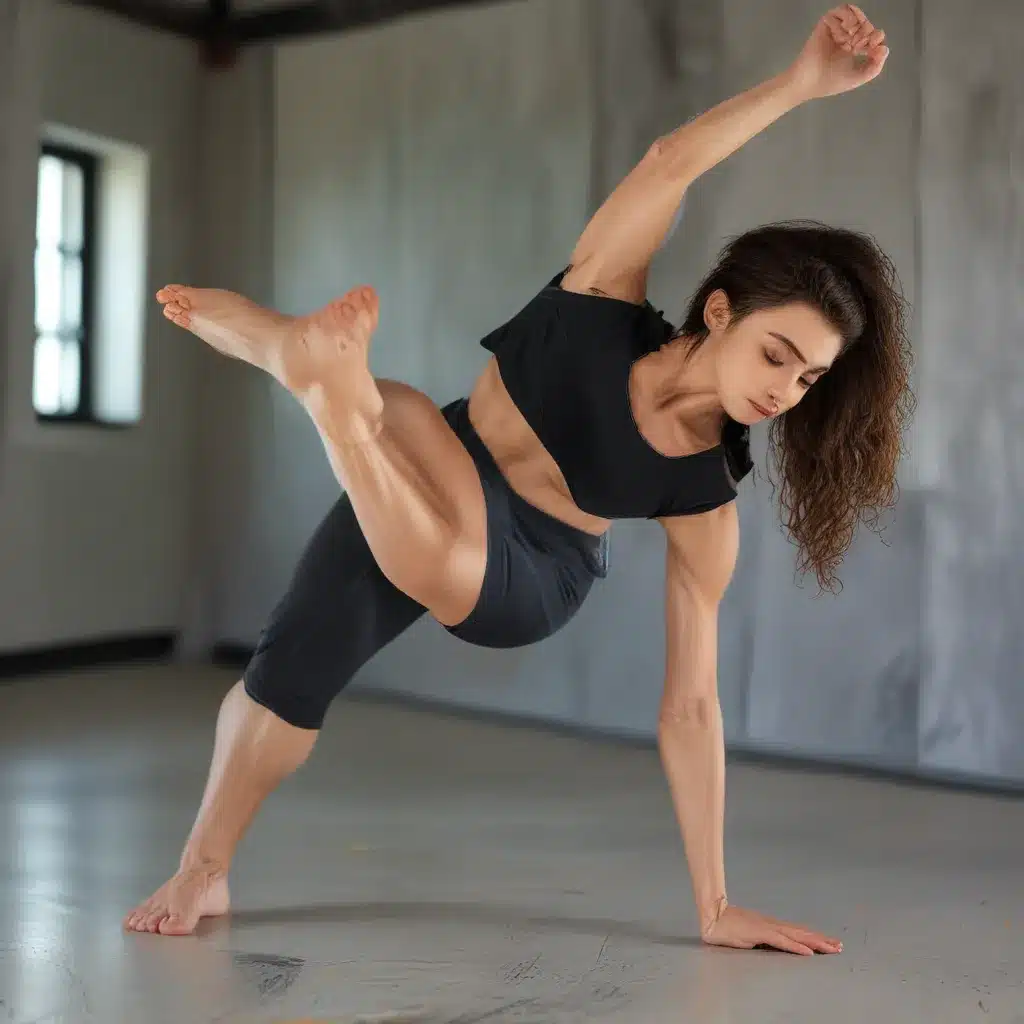
As a lifelong dance enthusiast, I’ve always been fascinated by the incredible feats that dancers can accomplish. Whether it’s the graceful pirouettes of a prima ballerina or the powerful leaps of a musical theater performer, there’s no denying the sheer athleticism and artistry involved. But what’s the secret behind their seemingly effortless movements? The answer, my friends, lies in the power of mobility and stability exercises.
The Importance of a Flexible and Strong Spine
Now, I know what you’re thinking: “Mobility and stability? Yawn, that sounds so boring!” But trust me, once you dive into the world of spinal mobility, you’ll realize just how crucial it is for dancers of all genres. You see, the spine is the true superpower of a dancer’s body. It’s the central pillar that allows for those gravity-defying leaps, the fluid transitions, and the stunning backbends.
Think about it this way: when you watch a ballet dancer execute a perfect arabesque, you’re not just marveling at their flexibility. You’re witnessing the incredible control and strength that comes from a spine that’s both supple and sturdy. The same goes for the musical theater performer who seamlessly incorporates complex choreography into their routine. It’s not just their technical prowess – it’s the foundational support of a spine that’s been meticulously trained.
According to the experts at Ballet with Isabella, the spine is the true “backbone” of a dancer’s artistry, and neglecting its mobility can lead to a whole host of problems, from poor balance to increased risk of injury. That’s why it’s so important for dancers to make spinal mobility a central part of their training regimen.
Unlocking the Dancer’s Potential
Now, I can already hear some of you saying, “But I’m already super flexible! Do I really need to work on mobility?” The answer, my friends, is a resounding yes. You see, flexibility and mobility are two very different things. Flexibility is about the passive range of motion in your muscles, while mobility is about the active control and strength you have throughout that entire range of motion.
As the experts at Target Training Dance explain, a dancer can be incredibly flexible – think splits, high kicks, and the like – but still lack the mobility to truly unleash their full potential. That’s where the three-step approach to mobility training comes in: soft tissue work, stretching, and targeted joint mobility exercises.
By addressing any limitations in your soft tissues, improving your overall flexibility, and then actively moving your joints through their full range of motion, you can unlock a whole new level of control, stability, and balance. And trust me, once you start incorporating these mobility exercises into your routine, you’ll be amazed at the transformation in your dancing.
Mobility Exercises for Dancers
Alright, time to get down to the nitty-gritty. Let’s dive into some of the best mobility exercises that can help dancers of all genres unleash their full potential.
Spinal Mobility Exercises
As we’ve already established, the spine is the foundation of a dancer’s strength and grace. That’s why it’s so important to focus on exercises that target spinal mobility and flexibility. Ballet with Isabella recommends a series of stretches and exercises, including cat-cow poses, thoracic spine rotations, and even some gentle backbends.
But it’s not just about the spine itself – the core muscles that surround it play a crucial role as well. Ballerina Core and Floor Barre classes are fantastic for building the strength and stability that supports a dancer’s spine.
Leg and Hip Mobility Exercises
Of course, it’s not just the upper body that needs attention – the legs and hips are equally important for dancers. Resistance band exercises like leg extensions, side leg raises, and hamstring curls can be incredibly effective for improving flexibility, strength, and control in these crucial areas.
And let’s not forget about those all-important pirouettes and jumps. By incorporating exercises that target the hips, ankles, and knees, dancers can improve their balance, coordination, and power – all essential elements for nailing those technical feats.
Upper Body Mobility Exercises
Last but not least, we can’t forget about the upper body. After all, dancers need to have the strength and stability to support their own bodyweight, whether they’re executing an intricate arm sequence or holding a challenging overhead position.
Exercises like assisted pull-ups, bicep curls, and shoulder external rotation are fantastic for building the requisite upper body strength and mobility. And don’t forget about those all-important core muscles – a strong, stable core is the foundation for any impressive upper body movement.
Putting it All Together
So, there you have it – the key to unlocking a dancer’s true potential lies in the powerful combination of mobility and stability exercises. Whether you’re a ballet dancer, a musical theater performer, or anything in between, incorporating these practices into your training regimen can truly transform your dancing.
But remember, it’s not just about doing the exercises – it’s about doing them consistently and with a focus on proper form. Rome wasn’t built in a day, and your mobility journey won’t be either. It’s all about making it a habit, listening to your body, and embracing the process.
And who knows, maybe one day you’ll be the one wowing audiences with your gravity-defying feats, all thanks to the unsung heroes of mobility and stability. So, what are you waiting for? It’s time to get moving and unlock your true dancer’s potential!
Oh, and one more thing – I’d be remiss if I didn’t mention the Musical Theater Center, the incredible education and performance hub that inspired this whole journey. If you’re looking to take your dancing to the next level, be sure to check them out. Trust me, your spine will thank you!

